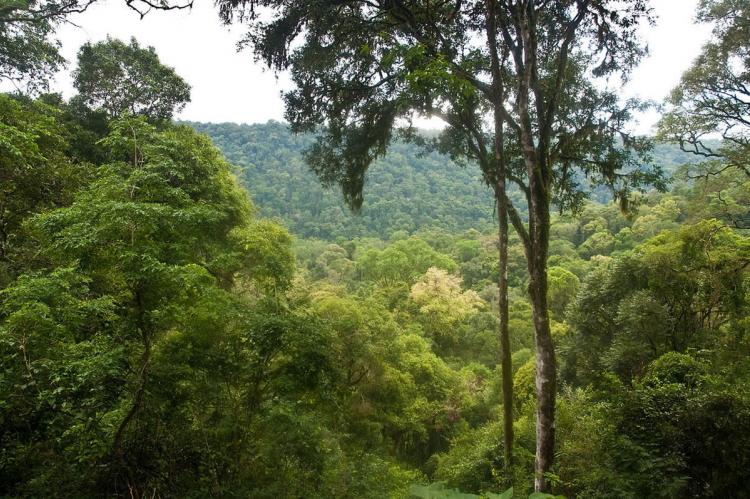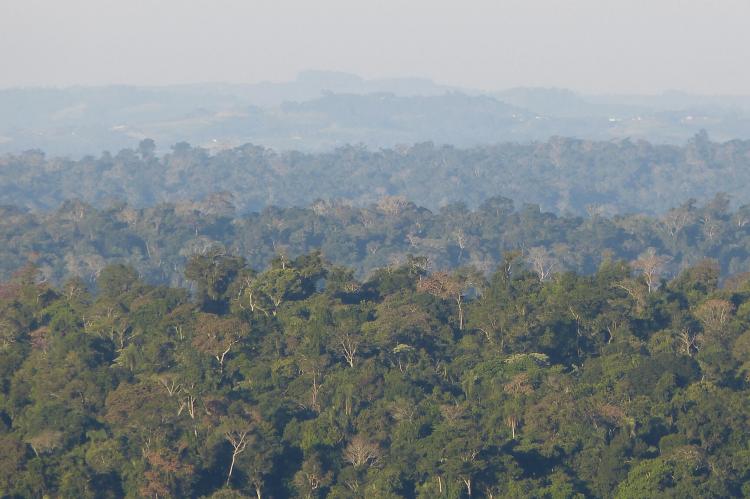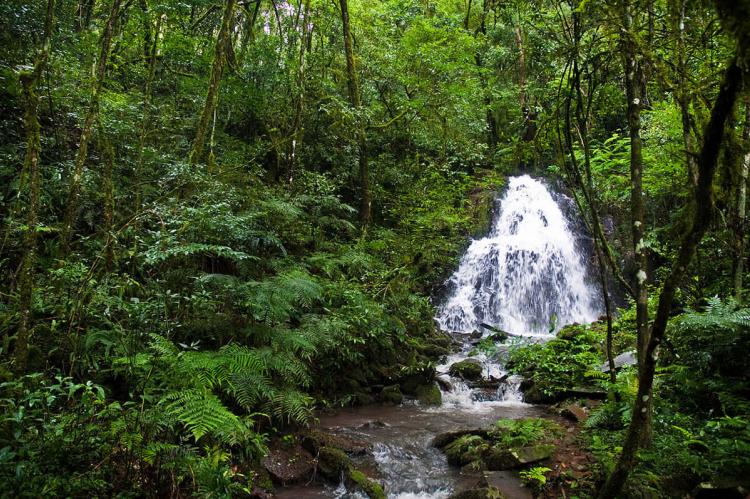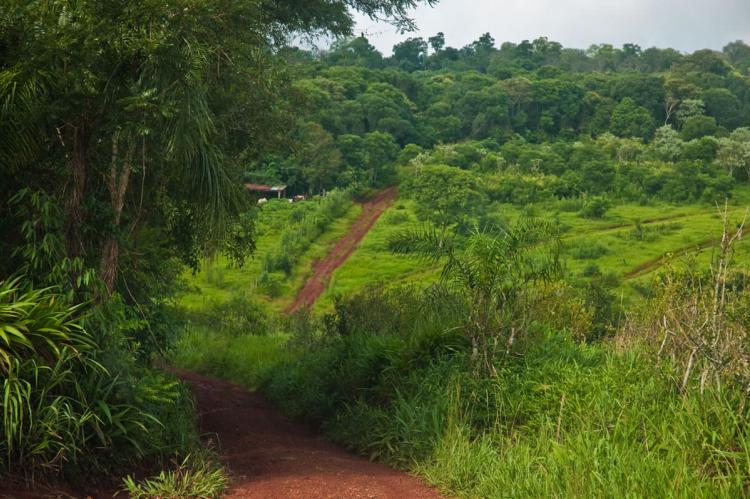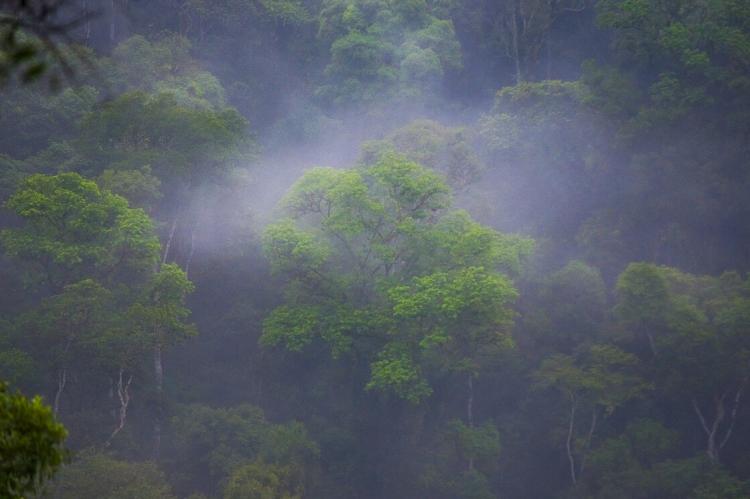Yabotí Biosphere Reserve: A Haven of Biodiversity and Cultural Heritage
The Yabotí Biosphere Reserve in northeastern Misiones, Argentina, is known for its rich biodiversity and cultural heritage. It is part of the Misiones Rainforest Corridor in Amazonia. It supports a wide variety of plant and animal life while also sustaining the traditional villages of the Guaraní people.
Yabotí Biosphere Reserve: A Sanctuary of Biodiversity and Culture
Nestled in the northeastern province of Misiones, Argentina, the Yabotí Biosphere Reserve is a beacon of biodiversity and cultural heritage. Spanning a significant portion of the Misiones Rainforest Corridor within the Amazon Rainforest biogeographical region, Yabotí is a subtropical forest ecosystem characterized by its unique climatic conditions and rich biodiversity. The reserve not only preserves a wealth of plant and animal life but also sustains the traditional villages of the Guaraní peoples, fostering a unique blend of natural and cultural conservation.
Geographical and Climatic Overview
Location and Climate
The Yabotí Biosphere Reserve is situated in the heart of the Misiones province, forming an integral part of the broader Amazon Rainforest biogeographical region. The region experiences two primary seasons: a tropical season marked by intense summer rains and a subtropical season with less extreme precipitation and cooler weather. This climatic duality contributes to the reserve's rich biodiversity and dynamic ecosystem.
Misiones province is characterized by its rolling hills, dense forests, and numerous rivers, creating a diverse landscape that supports a wide range of habitats. The region's topography and climate play a crucial role in maintaining the ecosystem's delicate balance, ensuring the survival of numerous plant and animal species.
Cultural Heritage
Guaraní Villages
The Yabotí Biosphere Reserve is home to 17 traditional Guaraní villages, one of which is located within the core area of Esmeralda. The Guaraní peoples, indigenous to parts of Paraguay, Argentina, and southern Brazil, have a deep-rooted cultural and historical connection to the land. These communities actively participate in sustainable development initiatives promoted by the Biosphere Reserve's Committee, balancing cultural preservation with ecological sustainability.
The Guaraní culture is rich in traditions, including language, music, dance, and spiritual beliefs. Their knowledge of the forest and its resources is invaluable for the reserve's conservation efforts. The Guaraní people rely on the forest for their livelihood, utilizing traditional methods of agriculture, hunting, and gathering that have minimal environmental impact.
Biodiversity and Ecosystems
Flora
The Yabotí Biosphere Reserve boasts a diverse subtropical forest ecosystem. The primary ecosystem type is tropical broadleaf forest, including significant habitats such as the Eastern and Meridional Brazilian Subtropical forest. The reserve is important for rehabilitating subtropical forests, especially following logging periods. The diverse flora includes a variety of herbaceous plants, underwood species, and towering trees, along with riparian forests lining numerous watercourses.
The forest is home to a wide variety of tree species, including several considered endangered. Notable species include the yerba mate (Ilex paraguariensis), used to make the traditional South American beverage, and the araucaria tree (Araucaria angustifolia), prized for its timber. The forest floor is covered with a rich understory of ferns, bromeliads, and orchids, providing a habitat for many insects and small animals.
Fauna
The fauna of Yabotí is equally diverse and includes several endangered species. The reserve is a habitat for jaguars (Panthera onca), tapirs (Tapirus terrestris), and collared peccaries, among other species. The presence of these animals indicates a recovering ecosystem, particularly as populations of species like the harpy eagle (Harpia harpyja) increase. The rich biodiversity underscores the reserve's critical role in conserving species under threat in other parts of their range.
In addition to the iconic jaguar, the reserve is home to a wide variety of mammals, birds, reptiles, and amphibians. Notable mammal species include the puma (Puma concolor), ocelot (Leopardus pardalis), and capybara (Hydrochoerus hydrochaeris). Birdwatchers can spot a variety of species, including the toco toucan (Ramphastos toco), red-bellied macaw (Orthopsittaca manilatus), and the endangered Vinaceous-breasted Amazon (Amazona vinacea). The rivers and streams in the reserve are teeming with fish and amphibians, including several species endemic to the region.
Socio-Economic Dynamics
Human Impact and Recovery
The Province of Misiones has an estimated population of 800,000, primarily engaged in agriculture and forestry. Crops such as yerba mate, tea, and various fruits are widely cultivated. However, the Guaraní Indigenous population, numbering around 3,500, faces challenges in developing a sustainable economy due to the pressures of logging and other economic activities that threaten the rainforest.
Logging has historically been a significant threat to the forest, leading to habitat destruction and fragmentation. However, efforts are being made to reverse these impacts through reforestation projects and sustainable land management practices. The reserve's management is focused on balancing economic development with environmental conservation, ensuring that the forest's resources benefit both the local communities and the ecosystem.
Sustainable Development
The main objective of the Yabotí Biosphere Reserve is the rational development of forest resources, which is achieved through selective cutting in the transition areas by local landowners, a practice closely controlled by the Ministry of Ecology and Natural Resources. These efforts aim to balance economic needs with the imperative of conserving the forest's ecological integrity.
Sustainable development initiatives in the reserve include promoting eco-tourism, which provides an alternative source of income for local communities while raising awareness about the importance of conservation. Additionally, programs are in place to support sustainable agriculture and forestry practices, ensuring that the exploitation of natural resources does not compromise the ecosystem's health.
Conclusion
The Yabotí Biosphere Reserve is a testament to the harmonious coexistence of natural and cultural heritage. By preserving the rich biodiversity of its subtropical forests and supporting the traditional lifestyles of the Guaraní peoples, the reserve exemplifies the principles of sustainable development and ecological stewardship. As a crucial part of the Misiones Rainforest Corridor, Yabotí continues to play a vital role in conserving the Amazon Rainforest's unique ecosystems and cultural landscapes.
